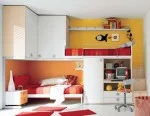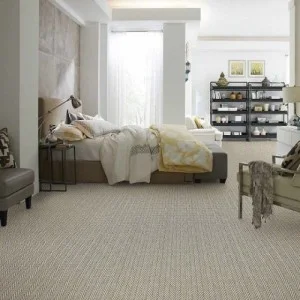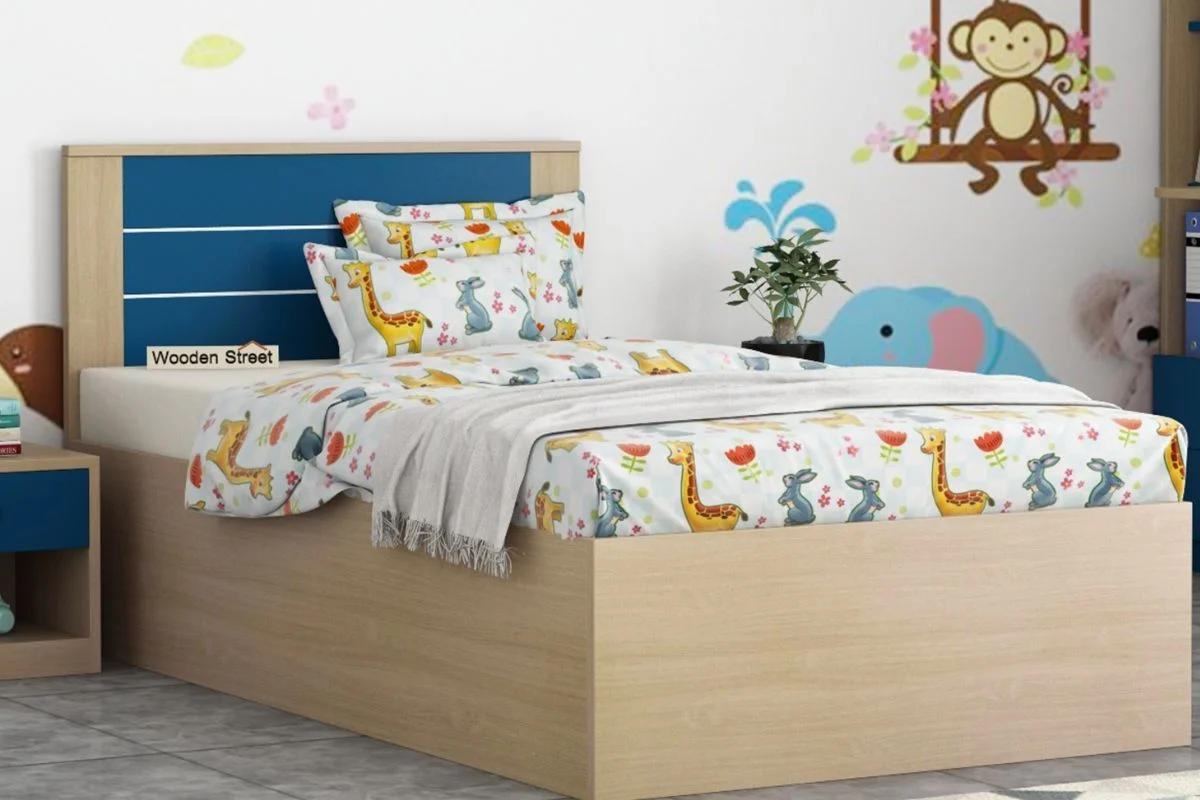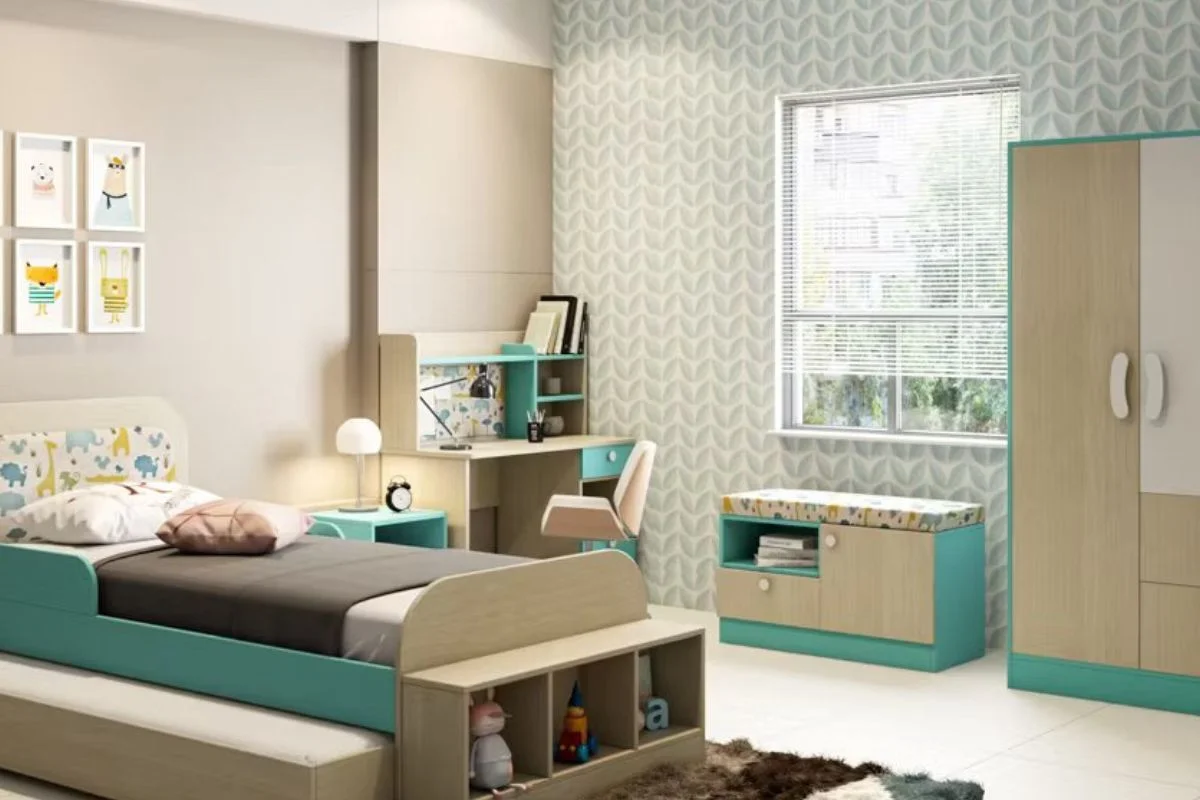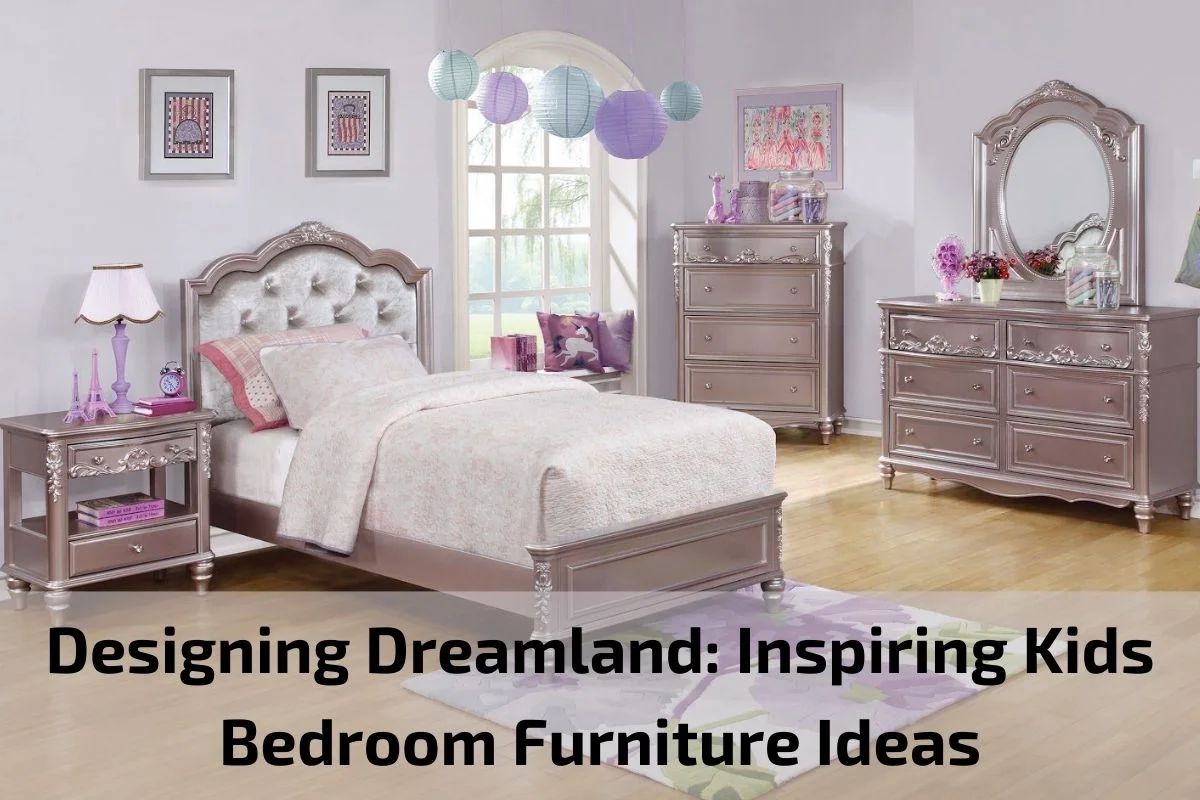 Designing a kids’ bedroom is an exciting endeavor that blends imagination, functionality, and creativity to create a space where little ones can dream, play, and grow. From whimsical themes to practical layouts, the possibilities for kids’ bedroom furniture are as limitless as a child’s imagination. “Designing Dreamland: Inspiring Kids Bedroom Furniture Ideas” invites you into the enchanting world of children’s bedrooms, where every corner holds the promise of adventure and discovery. In this exploration of kids’ bedroom furniture, we’ll delve into captivating themes, innovative designs, and practical solutions that transform ordinary bedrooms into magical havens tailored to children’s unique personalities and interests. As parents, caregivers, or designers, the task of creating a kids’ bedroom that both delights and nurtures can be both joyful and challenging. With a wealth of options in furniture styles, colors, and configurations, the journey to designing dreamland is as much about igniting imaginations as it is about meeting practical needs.
Designing a kids’ bedroom is an exciting endeavor that blends imagination, functionality, and creativity to create a space where little ones can dream, play, and grow. From whimsical themes to practical layouts, the possibilities for kids’ bedroom furniture are as limitless as a child’s imagination. “Designing Dreamland: Inspiring Kids Bedroom Furniture Ideas” invites you into the enchanting world of children’s bedrooms, where every corner holds the promise of adventure and discovery. In this exploration of kids’ bedroom furniture, we’ll delve into captivating themes, innovative designs, and practical solutions that transform ordinary bedrooms into magical havens tailored to children’s unique personalities and interests. As parents, caregivers, or designers, the task of creating a kids’ bedroom that both delights and nurtures can be both joyful and challenging. With a wealth of options in furniture styles, colors, and configurations, the journey to designing dreamland is as much about igniting imaginations as it is about meeting practical needs.Setting the Scene: Importance of Kids Bedroom Furniture
In the whimsical world of childhood, a bedroom serves as more than just a place to sleep—it’s a sanctuary for imagination, a haven for play, and a retreat for comfort and security. Kids bedroom furniture plays a pivotal role in shaping this magical space, providing not only functionality but also opportunities for creativity, growth, and self-expression. Nurturing Creativity and Imagination: A child’s bedroom is a canvas for their imagination to run wild. From themed beds that transform into pirate ships to whimsical playhouses nestled in cozy corners, kids bedroom furniture sets the stage for imaginative adventures and storytelling. Fostering Independence and Responsibility: A well-designed bedroom empowers children to take ownership of their space and belongings. With kid-friendly furniture such as accessible storage bins, child-sized desks, and cozy reading nooks, kids learn the importance of organization, tidiness, and personal responsibility from an early age. Promoting Restful Sleep and Relaxation: Quality sleep is essential for a child’s physical health, cognitive development, and emotional well-being. Comfortable beds, supportive mattresses, and cozy bedding create a soothing environment conducive to restful sleep and relaxation, helping children recharge and rejuvenate for the adventures of the day ahead. Encouraging Learning and Exploration: A child’s bedroom serves as a hub for learning and exploration, offering opportunities for creative play, reading, and discovery. With ergonomic study desks, adjustable task lighting, and storage solutions for books and educational materials, kids bedroom furniture fosters a love for learning and curiosity about the world. Creating a Safe and Secure Environment: Safety is paramount in a child’s bedroom, where little explorers are free to roam and play. Thoughtfully designed furniture with rounded edges, anti-tip features, and non-toxic finishes ensures a safe and secure environment where parents can have peace of mind while children explore and play to their heart’s content. Building Bonds and Making Memories: A child’s bedroom is a sacred space where cherished memories are made, from bedtime stories and secret hideouts to cozy snuggles and laughter-filled playdates. With inviting seating areas, bunk beds for sleepovers, and cozy reading corners, kids bedroom furniture creates opportunities for bonding, connection, and making lasting memories with family and friends.
Budget-Friendly Kids Bedroom Furniture Options
Designing a delightful and functional kids’ bedroom doesn’t have to break the bank. With savvy shopping strategies and a keen eye for value, parents can find budget-friendly kids bedroom furniture options that combine affordability with quality and style. Here are some tips and ideas for furnishing a kids’ bedroom on a budget: Multi-Functional Furniture: Look for multi-functional furniture pieces that serve dual purposes, such as bunk beds with built-in storage drawers or loft beds with study desks underneath. These space-saving solutions maximize functionality while minimizing the need for additional furniture pieces. Modular and Adjustable Furniture: Invest in modular furniture systems that can be reconfigured and expanded as your child grows. Adjustable shelving units, stackable storage bins, and modular wardrobes allow for flexibility and customization without the need for frequent furniture replacements. DIY and Upcycling Projects: Get creative and embark on do-it-yourself (DIY) or upcycling projects to transform existing furniture pieces or thrift store finds into unique and personalized creations. Repaint old dressers, refinish wooden chairs, or repurpose storage crates to add character and charm to your child’s bedroom décor. Shop Secondhand and Thrift Stores: Explore thrift stores, consignment shops, and online marketplaces for gently used kids bedroom furniture at discounted prices. You may find hidden gems such as vintage dressers, solid wood bed frames, or whimsical décor items that add character to the room without breaking the budget. Wait for Sales and Promotions: Keep an eye out for sales, clearance events, and seasonal promotions at furniture stores and online retailers. Many stores offer discounts on kids bedroom furniture during back-to-school season, holidays, and end-of-season clearance sales, allowing you to score great deals on quality pieces. Consider Flat-Pack Furniture: Flat-pack furniture, such as those from IKEA and other retailers, offers affordable and stylish options for kids bedroom furniture. These ready-to-assemble pieces are often priced competitively and come in a variety of styles and designs to suit different tastes and budgets. Opt for Basic Designs: Choose simple and timeless furniture designs that can easily transition from childhood to adolescence. Basic bed frames, dressers with clean lines, and neutral-colored storage bins provide a versatile foundation that can be personalized with bedding, décor, and accessories as your child’s interests evolve. Prioritize Quality Over Quantity: Instead of filling the room with an abundance of inexpensive furniture pieces, focus on investing in a few key items of durable and high-quality construction. A sturdy bed frame, a functional study desk, and ample storage solutions can go a long way in creating a comfortable and organized kids’ bedroom that stands the test of time.
Trends in Kids Bedroom Furniture Design
Kids’ bedroom furniture design is constantly evolving to reflect changing tastes, preferences, and lifestyle trends. From eco-friendly materials to smart and innovative features, here are some of the latest trends shaping the world of kids’ bedroom furniture design: Eco-Friendly and Sustainable Materials: With growing awareness of environmental issues, there is a rising demand for kids’ bedroom furniture made from eco-friendly and sustainable materials. Manufacturers are increasingly using renewable resources, recycled materials, and non-toxic finishes to create furniture that is both safe for children and gentle on the planet. Smart and Tech-Integrated Features: Kids today are growing up in a digital age, and furniture designers are responding by incorporating smart and tech-integrated features into kids’ bedroom furniture. From beds with built-in charging stations and USB ports to study desks with integrated LED lighting and built-in speakers, these innovative features cater to the tech-savvy generation and enhance functionality and convenience. Personalized and Customizable Designs: Personalization is key in kids’ bedroom furniture design, allowing children to express their unique personalities and interests. Customizable options such as modular shelving units, wall decals, and personalized name plaques enable kids to make their mark on their bedroom space and create a room that feels uniquely their own. Multi-Functional Furniture Solutions: In small or shared spaces, multi-functional furniture solutions are a practical and space-saving option for kids’ bedrooms. Bunk beds with built-in desks or play areas, trundle beds with hidden storage compartments, and convertible cribs that transition into toddler beds are examples of multi-functional furniture designs that maximize space and versatility. Whimsical and Imaginative Themes: Kids’ bedroom furniture is embracing whimsical and imaginative themes inspired by fantasy, nature, and childhood adventures. From castle-shaped beds and treehouse-inspired loft beds to whimsical animal-themed décor and fairy-tale-inspired accents, these magical themes spark creativity and inspire imaginative play. Bold Colors and Patterns: Vibrant colors and playful patterns are making a splash in kids’ bedroom furniture design, adding a dose of energy and personality to the room. Bold hues such as teal, coral, and mustard yellow are replacing traditional pastels, while graphic prints, geometric patterns, and animal motifs bring fun and whimsy to bedding, rugs, and décor accessories. Space-Saving and Compact Designs: With urban living on the rise, space-saving and compact furniture designs are gaining popularity in kids’ bedrooms. Foldable beds, wall-mounted desks, and modular storage systems maximize floor space and allow for flexible layouts in small or shared bedrooms, making the most of every square inch. Gender-Neutral and Inclusive Designs: Gender-neutral and inclusive designs are becoming increasingly prevalent in kids’ bedroom furniture, moving away from traditional gender stereotypes and embracing diversity and inclusivity. Furniture in neutral colors, minimalist designs, and versatile styles appeals to a wider audience and encourages children to express themselves authentically
Involving Kids in the Design Process of Kids Bedroom Furniture
When it comes to designing a kids’ bedroom, one of the most effective ways to create a space that resonates with your child is by involving them in the design process. By inviting kids to share their ideas, preferences, and imagination, parents can co-create a bedroom that reflects their child’s personality, interests, and sense of self. Here are some tips for involving kids in the design process of their bedroom furniture: Encourage Expression: Start by encouraging your child to express their thoughts, ideas, and wishes for their bedroom. Create a relaxed and open environment where they feel comfortable sharing their preferences, whether it’s favorite colors, themes, or furniture styles. Browse Inspiration Together: Explore magazines, websites, and catalogs featuring kids’ bedroom furniture and décor together with your child. Encourage them to point out designs, colors, and themes that catch their eye and discuss what they like or dislike about each option. Create Mood Boards or Collages: Help your child create a mood board or collage using images, colors, and materials that inspire them. This hands-on activity allows them to visualize their ideas and preferences and provides a tangible reference point for designing their bedroom. Visit Furniture Stores or Showrooms: Take your child on a shopping trip to furniture stores or showrooms where they can see and touch different furniture pieces firsthand. Let them explore different styles, test out beds and chairs, and get a sense of what appeals to them in terms of comfort and aesthetics. Consider DIY and Customization: If your child has specific ideas or preferences that can’t be found in stores, consider DIY projects or custom furniture options. Get creative with painting, stenciling, or decoupaging furniture pieces to add personalized touches that reflect your child’s unique style and interests. Prioritize Functionality: While aesthetics are important, prioritize functionality and practicality when choosing kids’ bedroom furniture. Involve your child in discussions about storage needs, space utilization, and furniture layout to ensure that their bedroom is not only beautiful but also functional and organized. Embrace Change and Evolution: Recognize that children’s interests and preferences may change over time, and their bedroom design should evolve with them. Choose furniture pieces that can adapt to their changing needs and interests, allowing flexibility for updates and modifications as they grow older. Celebrate Achievements and Milestones: Finally, celebrate the completion of your child’s bedroom design as a collaborative achievement. Involve them in the final touches, such as arranging décor items, hanging artwork, and making the bed, to instill a sense of ownership and pride in their newly designed space.Maintenance and Care Tips for Kids Bedroom Furniture
Ensuring the longevity and durability of kids’ bedroom furniture requires regular maintenance and care to keep it looking its best. Here are some essential tips for maintaining and caring for kids’ bedroom furniture: Follow Manufacturer’s Guidelines: Always refer to the manufacturer’s guidelines and recommendations for cleaning and maintenance specific to your kids’ bedroom furniture. Different materials and finishes may require different care methods, so it’s important to follow the instructions provided. Regular Dusting and Cleaning: Dust furniture surfaces regularly using a soft, dry cloth or a microfiber duster to remove dust, dirt, and debris. For deeper cleaning, use a mild detergent or wood cleaner diluted in water, following the manufacturer’s instructions. Avoid using abrasive cleaners or harsh chemicals that may damage the furniture finish. Protect Against Spills and Stains: Use coasters, placemats, and tablecloths to protect furniture surfaces from spills, stains, and scratches. Encourage kids to use spill-proof cups and containers to prevent accidental spills, and clean up spills promptly to prevent staining or damage to the furniture finish. Address Scratches and Damage: For minor scratches or nicks on wooden furniture, use a wood touch-up marker or crayon in a matching color to fill in the damaged area. For deeper scratches or gouges, consider using wood putty or filler to repair the surface before refinishing or touching up the affected area. Protect Upholstered Furniture: For upholstered furniture pieces such as chairs, sofas, and headboards, vacuum regularly using a soft brush attachment to remove dust and debris. Spot clean spills and stains promptly using a mild detergent or upholstery cleaner, following the manufacturer’s instructions. Consider applying a fabric protector or stain guard to help repel spills and stains and extend the life of the upholstery. Maintain Hardware and Moving Parts: Check and tighten hardware such as screws, bolts, and knobs regularly to ensure that furniture pieces are stable and secure. Lubricate moving parts such as drawer slides and hinges with a silicone-based lubricant to ensure smooth operation and prevent sticking or squeaking. Rotate and Rearrange Furniture: Periodically rotate and rearrange furniture pieces to distribute weight evenly and minimize wear and tear on specific areas. Avoid placing heavy objects or excessive weight on furniture surfaces, drawers, or shelves to prevent damage or sagging over time. Teach Kids Proper Care Habits: Encourage kids to take responsibility for caring for their bedroom furniture by teaching them proper care habits from a young age. Teach them to use furniture gently, avoid jumping or climbing on furniture, and clean up messes and spills promptly to prevent damage and maintain a tidy and organized bedroom environment. Protect Against Sunlight and Heat: Position furniture away from direct sunlight and heat sources such as radiators or heaters to prevent fading, warping, or damage to wood finishes and upholstery fabrics. Use curtains, blinds, or window treatments to filter sunlight and protect furniture from UV rays. Schedule Professional Maintenance: Consider scheduling professional maintenance and upholstery cleaning services for your kids’ bedroom furniture periodically to keep it looking fresh and well-maintained. Professional cleaners have the expertise and equipment to deep clean and refresh furniture upholstery and finishes, extending the life of your furniture investment.
Conclusion
In conclusion, maintaining and caring for kids’ bedroom furniture is essential for preserving its appearance, functionality, and longevity over time. By following the maintenance and care tips outlined in this guide, parents can ensure that their children’s furniture remains in top condition, providing a safe, comfortable, and inviting environment for rest, play, and study.
Lorem ipsum dolor sit amet, consectetur adipiscing elit. Ut elit tellus, luctus nec ullamcorper mattis, pulvinar dapibus leo.



